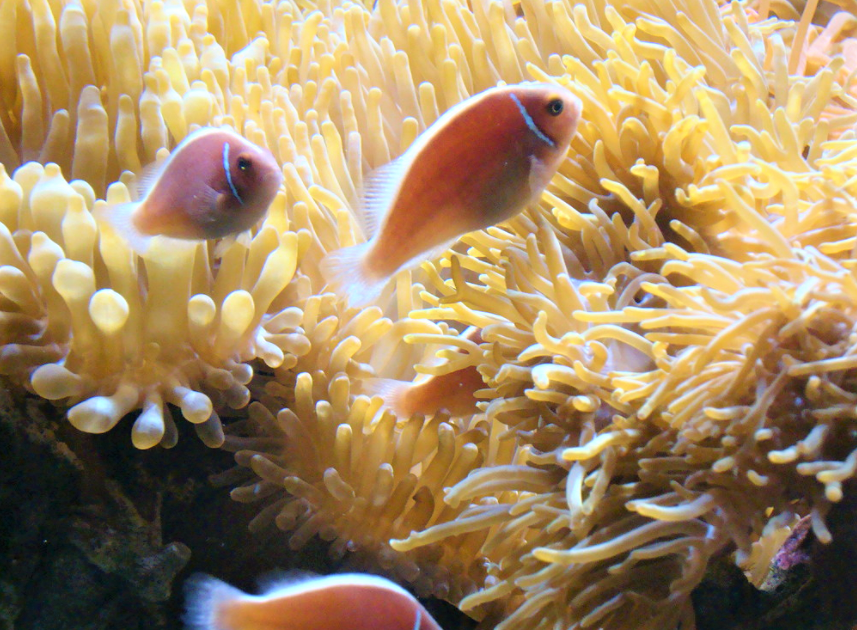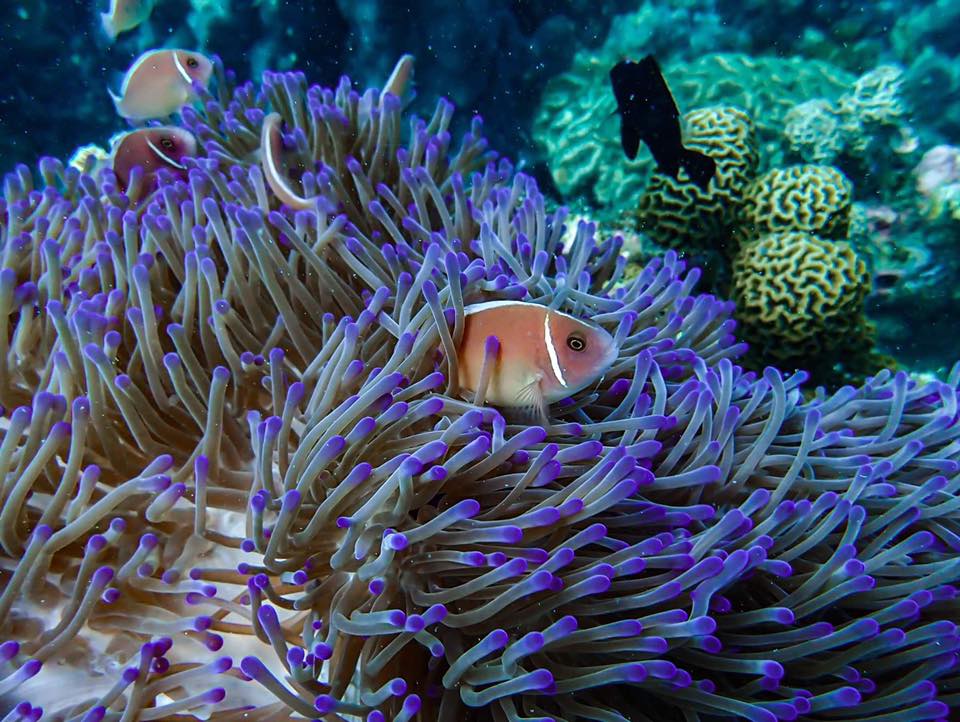This fish can be seen from as far as Northern Australia to the Malay Archipelago. They are abundant around Koh Tao, Thailand, especially at our favourite dive site Chumphon Pinnacle.
The photo shows an Amphiprion Perideraion Anemone Fish, otherwise known as a Pink Anemone fish or Skunk Anemone fish due to the white stripe along it’s back. They are nervous and hide within the anemone’s tentacles for protection making them notoriously difficult to photograph,
Born male, the largest, most dominant fish in a colony will change its’ gender to become the reproductive female. The next largest fish will be the sole reproductive male, pairing for life. All other males purposely modify their behaviour to pose no threat to the dominant male, and therefore are tolerated within the colony. Once the female dies, it’s mate, the larger male becomes female, and the next largest juvenile takes his place to become the breeding male. You will often see two adults, and several smaller juveniles together.

The Pink Anemone fish has a Symbiotic relationship with its’ host, Heteractis Magnifica otherwise known as the Magnificent Anemone. And Magnificent it is, often with a brightly coloured outside, and growing up to 70cm wide. The anemone prefers to live in warm waters and enjoys areas where there is current. The current helps to bring food to the anemone, which eats and then poops from the same place. The Pink Anemone fish then eats the waste food, any leftovers and dead parts of the anemone, which in turn it poops, giving a nutritious meal back to the anemone. Nice.
Anemones have stinging cells named nematocysts which would kills most fish. However, the Anemone fish is covered in a mucus which protects it from the stinging cells. It gains protection from the anemone and in return chases away predators.
There are one of around 30 species of anemone fish, which are part of the Damsel family.
Anemone fish never stray more than a metre away from their home. Their life expectancy in the wild is around 10 years, much less if they stray from their anemone!
They are highly active fish, moving around the anemone. The constant movement possibly oxygenates the anemone. Anemones with resident fish are normally larger than without.
We think the relationship between this active little fish and its’ magnificent host is fascinating.
The Scuba Dive Online team can recommend several destinations worldwide where Pink Anemone Fish are most commonly seen. Visit the destinations page on our website.
Thank you to Heidi Rljsdijk for these photographs, which were taken during her PADI Digital Photography Instructor Specialty course.


